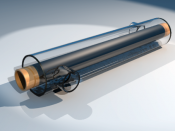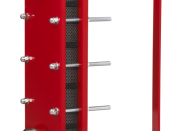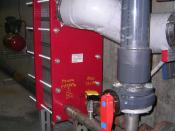Corrosion in Heat Exchangers
Table of Contents
Introduction.........................................................3
Corrosion Problems..............................................6
References.........................................................15
Section 1
Introduction
Heat exchangers are commonly used to transfer heat from steam, water, or gases, to gases, or liquids. Some of the criteria for selecting materials used for heat exchangers are corrosion resistance, strength, heat conduction, and cost. Corrosion resistance is frequently a difficult criterion to meet. Damage to heat exchangers is frequently difficult to avoid.
There are many variables related to specifying heat exchangers -- for example, temperatures, flow rates, pressure drop and heat transfer -- that are common to all types. There also are some variables that are specific to specifying a plate heat exchanger -- in particular, the number of passes.
The main components of the plate heat exchanger include:
÷ Plate Pack. The plate pack is composed of a number of corrugated heat transfer plates according to the heat transfer surface required. The plate corrugations provide support between plates and encourage turbulence, which gives the plate heat exchanger its high heat transfer.
÷ Gaskets. The molded elastomeric gaskets on the plates ensure that the flow channels are sealed securely from each other, preventing cross-contamination. The gaskets also determine the direction of flow within the exchanger.
÷ Frame. The frame provides structural support and pressure containment by enclosing the plate pack. The main frame components consist of a fixed end, a movable end, upper and lower carrying bars, and tightening bolts.
÷ Connections. The connections for incoming and outgoing media usually are found in the fixed end plate. In the case of a multiple-pass design, connections also are found on the movable end.
The plate heat exchanger is well known as one of the most efficient heat exchanger designs. Its basic concept - using corrugated plates for heat transfer - was introduced in the early...


